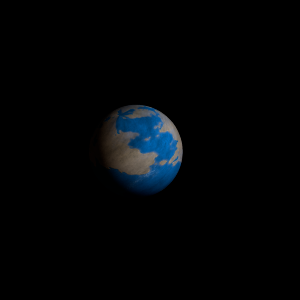|
|
Space Astro
|
Info for exoplanet "Erise"
| Scientific (actual) data |
|---|
| Name | PSR J1953+1844E b |
| Planet status | Confirmed |
| Planet mass | 20 |
| Mass sini | 10 |
| Radius | 0.389 |
| Orbital period | 0.0370399 |
| Semi major axis | 0.002445 |
| Inclination | 30 |
| Discovered | 2023 |
| Updated | 2024-07-27 |
| Temperature (kelvin) | 6000 |
| Publication | Published in a refereed paper |
| Detection type | Timing |
| Mass measurement type | Timing |
| Radius measurement type | Flux |
| Alternate names | M71E b, COM-MT1E |
| Star name | PSR J1953+1844E |
| Right ascension | 298.41° |
| Declination | 18.75° |
| Star distance | 4000 |
| Star sp type | PSR |
| Star alternate names | M71E, GPPS 190 |
| Wikipedia article | PSR J1953+1844E b |
Back
| |
| Fictional info (?) |
|---|
| Suggested name | Erise |
| Planet type | Huge cold gas giant |
| tricky voyage.
Its north and south poles, therefore, lie where most other planets have their equators. |
| Atmosphere | Hydrogen chloride | 34% |
| Nitric oxide | 26% |
| Krypton | 18% |
| Xenon | 17% |
| Ammonia | 3.4% |
| Carbon dioxide | 0.35% |
| Atmospheric pressure | 0.6 bar |
 |
| No known satellites |
| Google search for Erise |
|
Website by Joachim Michaelis
|
|
|
|